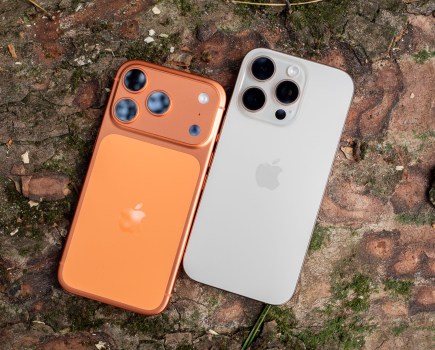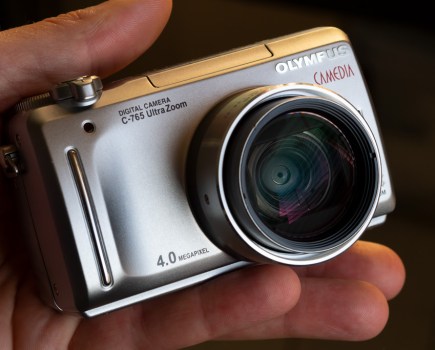Everyone loves taking photos, and it’s the primary reason why you’re on this page, for a new phone that will get you better photos. You don’t need to spend massive amounts of money, with one of the best budget camera phones, you can get a brilliant camera to take everywhere with you, without having to spend a fortune.
While the costs of flagship phones tend to climb and climb, there’s still a huge market for affordable phones, luckily many of them boast great camera systems. You just have to know where to look – and that’s why I’m here to help make sure you get the right phone for you. All the phones on this list are ones we have reviewed and rated, so you can be confident we’re recommending ones that we can personally vouch for.
Another good option, when your budget is tight, is to buy an older flagship or mid-range phone from a big manufacturer, or go with a lesser-known make. On this list, we’ve included both options, so while you’ll see familiar handsets from the likes of Apple, Samsung and Google, you can also consider some of the best options from the likes of Motorola, Xiaomi, Honor, Tecno and more. As new phones are introduced in 2025/2026, I expect to see last years models continue to drop in price, making them even more of a bargain for you.
If you’re not sure what some of the technical specs on a phone’s camera mean, you can scroll to the bottom of this page where we’ve put together an explainer on how to choose the best budget camera phone. If you’re looking for something more high-end, see our main guide to the best flagship camera phones.
The best budget camera phones: our quick list
Here’s our quick run-down of the best budget and mid-range camera phones:
- Best budget phone overall: Samsung Galaxy S24 FE – buy now
- Best budget Google phone: Google Pixel 9a – buy now
- Best cheap iPhone: Apple iPhone 12 – buy now
- Best budget Samsung: Samsung Galaxy A56 5G – buy now
- Best for video and vlogging: Samsung Galaxy S23 – buy now
- Best budget Leica phone: Xiaomi 13T Pro – buy now
- Best budget phone for low light: Motorola Edge 50 Neo – buy now
- Cheapest Samsung camera phone: Samsung Galaxy A35 – buy now
- Best mid-range Honor phone: Honor 90 – buy now
- Best budget phone for battery life: OnePlus Nord CE4 Lite – buy now
- Best under $500 / £450: Google Pixel 8a – buy now
- Best value Tecno camera phone: Tecno Camon 40 Pro
Looking for the best deal on budget camera phones? Not only will you find the best budget camera phones, but you’ll also find some of the best cheap camera phone deals, as our ‘Buy now’ buttons are setup to automatically take you to the best prices, from trusted retailers, plus you’ll also find a list of other retailers below each camera, so you can find the right deal for you.
Continue reading to find out more, along with sample photos from all the phones featured…
Why you can trust Amateur Photographer
We spend many hours testing every product we recommend, in detail, in a variety of situations and shooting scenarios, and only use experts for our reviews, so you can be sure that you’re getting the best products. Find out more about our expert writers.
Best budget phone overall
Best budget phone overall: Samsung Galaxy S24 FE
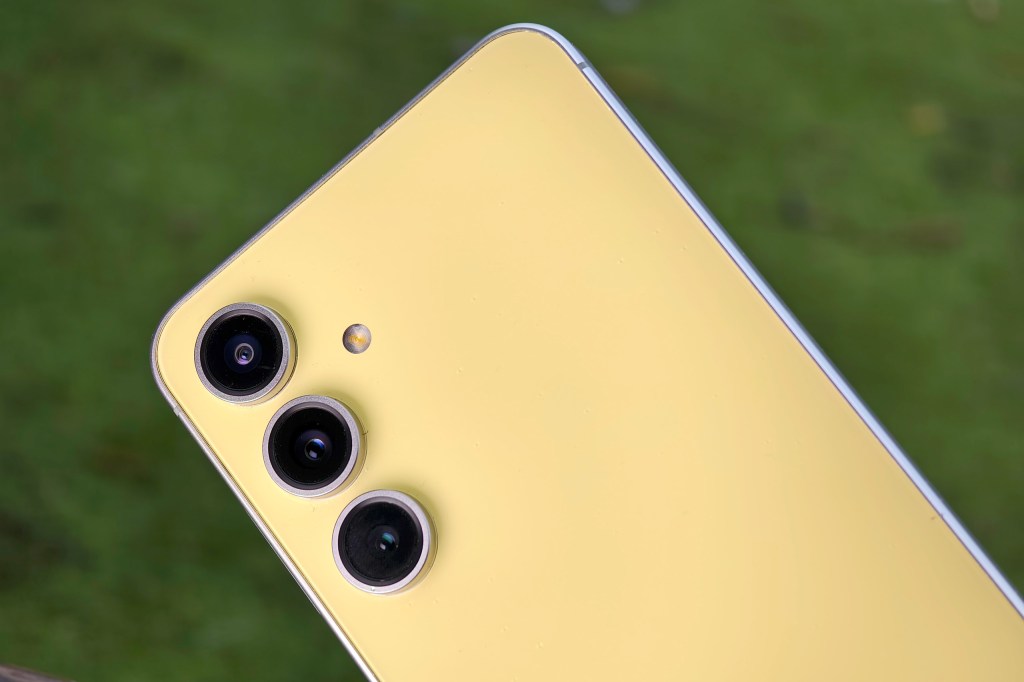
Amateur Photographer verdict
The Samsung Galaxy S24 FE isn’t up to the same level as the full-fat S24 series, but if you can get it at a reduced price, it’s a very good phone.- Great value – cheaper than the S24/S25
- Larger screen than S24 (normal version)
- IP68 rating (water/dustproof rating)
- Telephoto and selfie cameras downgraded (compared to S24)
- Selfie camera lacks AF
Specifications at a glance:
| Rear cameras | 50MP wide-angle, f/1.8, 24mm equivalent, PDAF, OIS 12MP ultra-wide, f/2.2, 13mm equivalent, fixed focus 8MP telephoto f/2.4 PDAF OIS (76mm equivalent) |
| Selfie camera | 10MP selfie camera f/2.4 fixed focus |
| Video | 8K/4K video recording |
| Screen | 6.7inch FullHD+ AMOLED 2X, 120Hz screen, 1900nits peak brightness |
| Battery | 4700mAh (25W charging 15W wireless) |
| Dimensions | 154.7 x 73.3 x 8.9mm, 186g |
A mid-range phone for budget prices – normally you’d have to look to other brands for something with these specifications, which is why it makes this Samsung Galaxy S24 FE such a good deal, as you can find it for under $500/£500. It has a triple camera setup on the rear, and lots of premium features that you find in much more expensive S series phones, that are all pricier than this model.
For photography (and video) you’ve got a 50MP main camera with optical image stabilisation (OIS), a 12MP ultra-wide angle camera, and an 8MP telephoto camera with 3x telephoto zoom. A pretty generous setup, and one that gives you good images, as well as good versatility. There’s a 10MP selfie camera, but with fixed-focus it’s a little bit behind the flasgship S24/S25 phones. There’s also 8K video recording, which is rare for a mid-range phone.

There’s a good sized 6.7inch screen, a 4700mAh battery with wireless charging, and you get 7 years of updates, matching other flagship phones, along with IP68 waterproof rating. With 128GB/256GB/512GB storage options you also get to choose how much you need.
Read our full Samsung Galaxy S24 FE review.
Best budget Google phone
Best budget phone overall: Google Pixel 9a
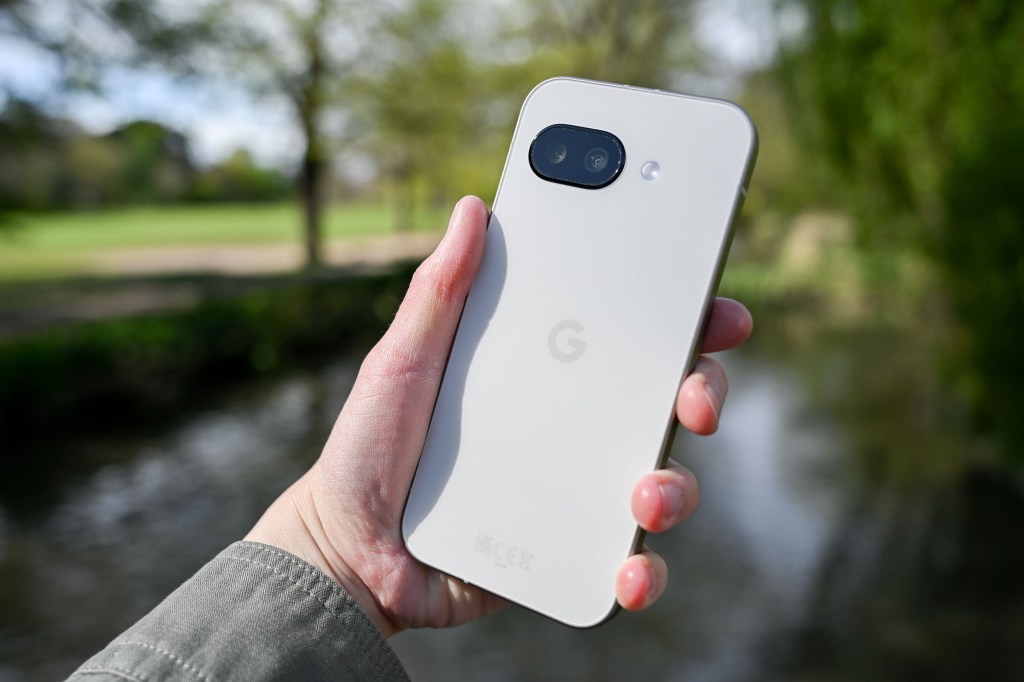
Amateur Photographer verdict
With a solidl performing 2x camera system, some fun photography options and a great overall feature set, the Pixel 9a is the mid-ranger to beat at the moment.- Good price
- Macro added to ultra-wide
- AI editing and shooting tools
- Not much memory for the base price
- No telephoto lens
Specifications at a glance:
| Rear cameras | 48MP wide-angle, f/1.7, 25mm equivalent, OIS 13MP ultra-wide, f/2.2, 14mm equivalent, with AF |
| Selfie camera | 13MP selfie camera, f/2.2, 21mm equivalent, fixed focus |
| Video | 4K 30p from all cameras, 4K 60p from main |
| Screen | 6.3inch FullHD pOLED, 60-120Hz screen, 2700nits peak brightness |
| Battery | 5100mAh battery |
| Dimensions | 154.7 x 73.3 x 8.9mm, 186g |
Google has introduced the Pixel 9a with a new design, larger screen, and updated camera system. There’s a brighter main camera lens with f/1.7 aperture, as well as an updated ultra-wide-angle camera that now has auto-focus, which allows for close-up macro shots. You still have Best Take, Magic Editor, and Audio Magic Eraser to play with, in addition to the more conventional photographic modes that have appeared on previous generations, such as Night Sight and long exposure.
The cameras may sound like fairly standard stuff, but as we found in our review, it results in images of high quality, with a pleasing level of detail and punchy but natural colours. The various shooting modes on the camera app work well, and if you have access to a decent smartphone support like a mini-tripod, you can take advantage of specialised modes like the long-exposure astrophotography function.

The main rival to the Google Pixel 9a is likely to be another Google phone – if you don’t care about the AI features then the Pixel 8a/7a is going to deliver much the same results for a cheaper price. However, with its price still temptingly low, we can safely say that the Google Pixel 9a is the best budget Google phone on the market, and you will not be disappointed with the results it produces.
This is also the best budget phone for astrophotography as well, thanks to the advanced night modes, and astrophotography mode, which increases your slow shutter speed photography performance, with extra long exposures possible when used on a tripod. Google’s latest phones also come with 7 years of updates, so you know it’ll still be secure as time passes.
Read our full Google Pixel 9a review.
Best budget iPhone
Best budget iPhone: Apple iPhone 12

Amateur Photographer verdict
A cheap iPhone is a rare thing, but the iPhone 12 of a few generations past can be picked up used and refurbished for around $250/£250, and at that price it’s a winning proposition.- Terrific value for an iPhone
- Still gets the latest updates
- Brilliant camera system
- No manual mode
- No telephoto camera
Specifications at a glance:
| Rear cameras | 12MP f/1.6 main camera, OIS 12MP f/2.4 ultra-wide-angle camera |
| Selfie camera | 12MP f/2.2 selfie camera |
| Video | 4K 60p |
| Screen | 6.1inch OLED screen, 1200nits (peak) |
| Battery | 2815mAh battery |
| Dimensions | 146.7 x 71.5 x 7.4mm, 164g |
This guide used to be Android-only, as that was pretty much the only option for cheap phones. However, the iPhone 12 (which only came out in 2020) has seen its refurbished price fall down to around $250/£250 recently, and that means it more than qualifies to make this list. If you don’t have much to spare for a new camera phone but can’t bear the thought of being without iOS – fret not!
For your money, you get a highly capable dual-camera setup, consisting of a 12MP f/1.6 wide-angle camera and a 12MP f/2.4 ultra-wide camera. The latter is fixed-focus, so can’t be used for close-ups, and there’s no optical zoom or telephoto module to speak of. If you’ve used a more modern phone it’ll undoubtedly feel a little old school, but the good news is that the pictures the iPhone 12 produces still look great. Colour reproduction is excellent, lovely and punchy. Exposures are accurate, and the camera automatically uses multi-shot composition to achieve a wide dynamic range. Long story short, the images are more than adequate for a phone at this price.
- For more iPhone options check out our guide to the best iPhones for photography
While there isn’t a dedicated macro mode, you can get decent close-up results just with the main camera. There’s portrait mode for blurring the background, a night mode that automatically kicks in when it gets dark, plus exposure compensation controls for tweaking the settings to your liking. All good stuff.
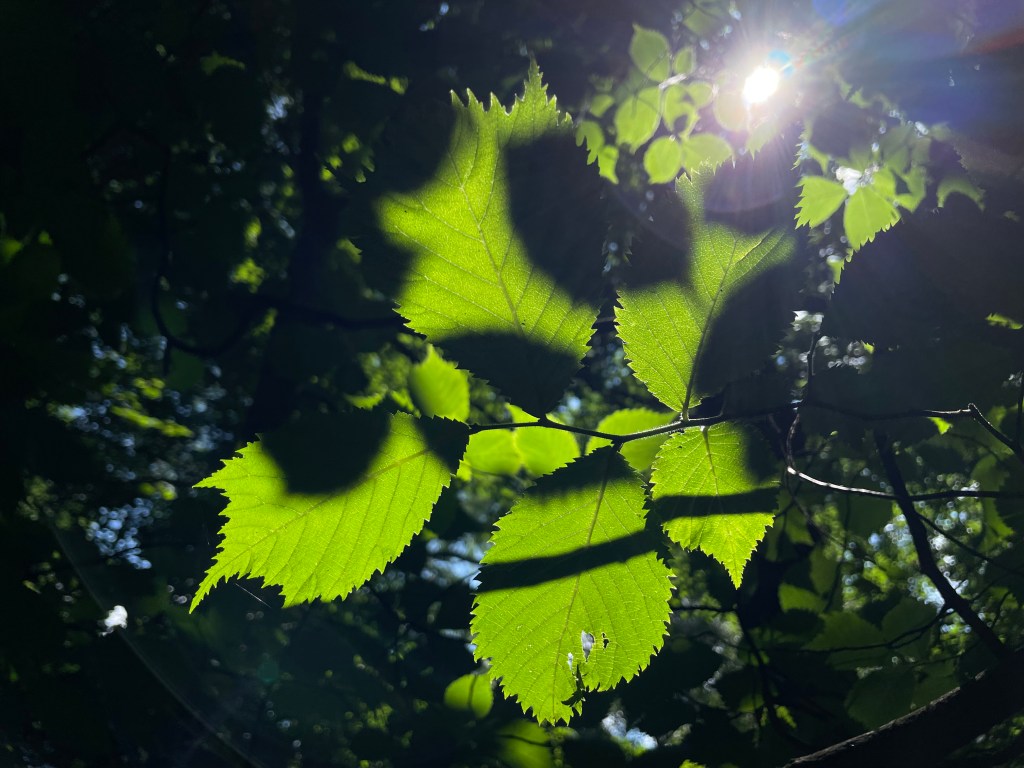
The iPhone 12 may feel unavoidably dated nowadays in terms of its hardware. However, it’s still receiving software updates and it’s still got that inimitable iPhone smoothness of operation. For this price, it’s a bargain as far as we’re concerned – and well worth the consideration of anyone on the hunt for a great, cheap iPhone. Video quality is good too, with effective image stabilisation, and 4K video recording.
- What about the iPhone 16e? Apple’s cheapest new phone is the iPhone 16e, but is extremely limited in terms of cameras, with just one main camera, no telephoto, and no wide-angle. Combine that with a price that is double that of an iPhone 12, and the 16e is one budget phone to avoid.
Read our full iPhone 12 review
Best budget Samsung
Best mid-range budget Samsung: Samsung Galaxy A56

Amateur Photographer verdict
It feels like using one of Samsung’s premium ‘S’ phones, but comes at nowhere near the cost. The Samsung Galaxy A56 is a solid mid-range camera phone that has some nice improvements.- Robust build quality
- Main camera impresses
- Ultra-wide also good
- Excellent value for money
- Now available in the US
- 5MP macro isn’t great
- No wireless charging
Specifications at a glance:
| Rear cameras | 50MP wide-angle, f/1.8, 23mm equivalent, PDAF, OIS 12MP ultra-wide, f/2.2, 13mm equivalent, fixed focus 5MP macro camera, f/2.4, fixed focus |
| Selfie camera | 12MP selfie camera, f/2.2, fixed focus |
| Video | 4K from all cameras (excluding macro) |
| Screen | 6.7inch Super AMOLED, 120Hz screen, 1900nits peak brightness, Victus+ |
| Battery | 5000mAh battery |
| Dimensions | 162.2×77.5×7.4mm, 198g (IP67) |
The latest and best in Samsung’s Galaxy A line of budget-friendly smartphones, the Samsung Galaxy A56 has made a number of improvements to the A55, with improved screen, faster (45W) charging, and the addition of AI features. The RRP of the phone is $499 / £499 ($549 for 256GB) and it comes with 256GB as standard in the UK, with regular offers and discounts meaning it’s often cheaper than that. And the good news is that you still get a highly capable camera phone for the money.
The triple-camera setup on the Galaxy A56 is fairly standard for a phone of this type, and isn’t changed much from the previous model. The main camera is the 50MP f/1.8 wide-angle main camera with optical stabilisation; this camera outputs images at 12MP with pixel binning, and the level of quality is consistently good, with pleasing detail. There’s also a 12MP ultra-wide camera, which does a commendable job of matching it for detail and colour reproduction. Then there’s also the 5MP macro camera with fixed focus, which is not great, especially as you get better results from the main camera. We would have preferred a telephoto module; though of course, this would have added to the cost.
The phone is great to use – it’s got that Samsung smoothness in its operation and interface. The photo app is intuitive and comes with packed with fun shooting modes, as well as manual mode to give you full settings control. We appreciate the generous battery with 5000mAh capacity, though a wireless charging option would have been nice.

The Samsung Galaxy A56 is not any kind of reinvention from the previous model in the series, but it’s another solid mid-range camera phone that does a consistently good job of capturing quality images and videos. Plus, the aforementioned frequent discounts mean you stand a decent chance of picking it up for a bargain price. The A56 gets six major updates to the operating system. You could also look at the A55 if your budget is tight.
Read our full Samsung Galaxy A56 review.
Best for video
Best for video and vlogging: Samsung Galaxy S23

Amateur Photographer verdict
It offers an impressive set of cameras, a good selfie camera with autofocus, and a flagship phone design, with all the features you’d expect on a flagship.- Price has tumbled
- Not too large, but feels premium
- Excellent, consistent image quality
- No dedicated Macro mode
- Battery life not as good as others
Specifications at a glance:
| Rear cameras | 50MP main wide-angle, f/1.8, OIS, 24mm equivalent 12MP ultra-wide-angle, f/2.2, 13mm equivalent 10MP telephoto, f/2.4, 3x/70mm equivalent, OIS |
| Selfie camera | 10MP selfie camera with AF, 25mm equivalent (and 4K video) |
| Video | 8K 24p main camera, 4K from all cameras |
| Screen | 6.1inch screen, AMOLED, 120Hz, Gorilla Glass Victus 2 |
| Battery | 3900mAh battery, plus wireless charging |
| Dimensions | 146.3 x 70.9 x 7.6mm, 168g |
Yesterday’s flagship is this year’s bargain, and so it goes with the Samsung Galaxy S23. It was never a hugely expensive phone (by smartphone standards at least), originally retailing at $799 / £769, but given that it can now be picked up for about $349 / £349, that’s quite a substantial saving.
The Galaxy S23 was the entry-level model, not a million miles away in features from mid-range phones. So it doesn’t get the headline-grabbing 108MP or 200MP main cameras of its flagship siblings like the S22 Ultra or S23 Ultra, but it still has a more-than-respectable 50MP main camera that benefits from optical stabilisation. This sits alongside a 12MP ultra-wide-angle, as well as a 10MP 3x telephoto camera that’s stabilised (and is a good deal more welcome than a rubbish macro camera).
As befitting a flagship phone, the Galaxy S23 also feels premium in the hand and has all the quality-of-life features you’d expect from such a device. Wireless charging, an in-screen fingerprint reader – Samsung even chucks in IP68 waterproofing, meaning it can even survive being submerged in water (though, as ever, we’re not recommending you test this too enthusiastically).

The imaging performance of the Galaxy S23 is consistently impressive, delivering punchy colours and good consistency between the different camera modules. There’s no dedicated macro mode as the ultra-wide-angle camera is fixed focus (you’ll have to pay for an Ultra model for that kind of luxury), but telephoto performance is generally very good as long as there’s sufficient light.
This is also the best budget camera phone for vlogging thanks to the impressive selfie camera with both auto-focus (AF) and 4K video recording. You can even record 8K video at 24p if that’s something you’re interested in; though in truth, most people will probably be just fine with the excellent 4K. If you like the look of the S23, but want something bigger, then check out the S23+ or if you’re looking for a more affordable option, check out the previous models, such as the S22, or S22+ both with wireless charging as well. The S23 will get up to four major updates.
Read our full Samsung Galaxy S23 review.
Budget Leica phone
Best budget Leica phone: Xiaomi 13T Pro
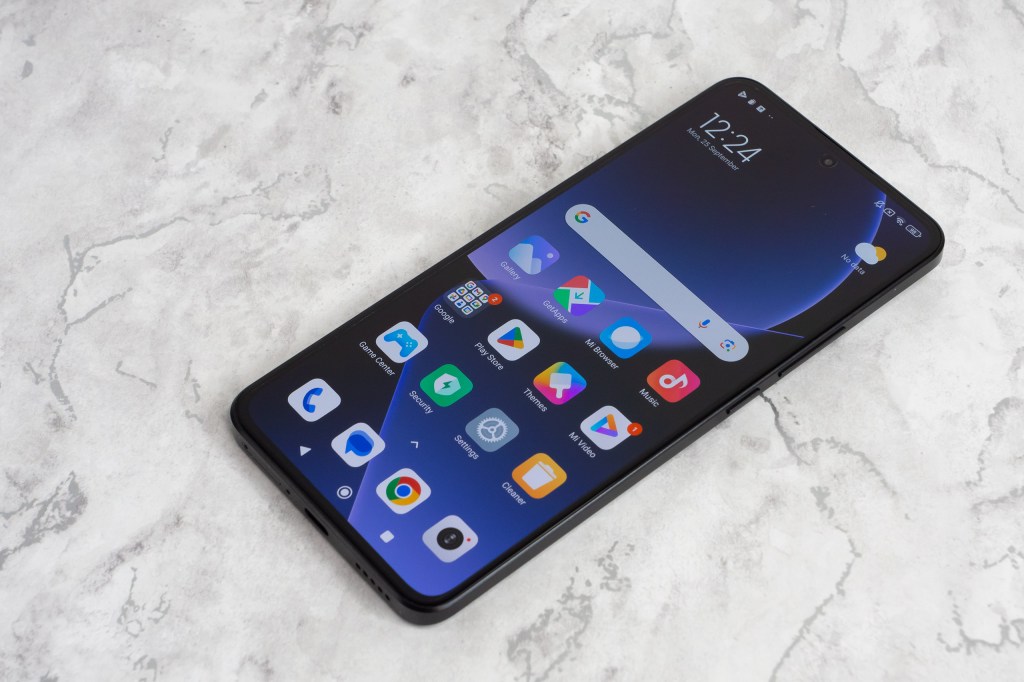
Amateur Photographer verdict
This capable smartphone boasts a triple camera array, and its Leica-branded optics mean it’s quite possibly the cheapest Leica camera you can buy right now.- Leica-made camera lenses
- 8K video
- Significant general improvement over 12T Pro
- Telephoto camera is 2x not 3x
- No dedicated macro camera
- More expensive than other options on this list
Specifications at a glance:
| Rear cameras | 50MP wide-angle, f/1.9, OIS, 1/1.28inch sensor, Leica lens, 24mm equiv. 50MP telephoto, f/1.9, Leica lens, 50mm equiv. 12MP ultra-wide-angle, f/2.2, Leica lens FF, 15mm equiv. |
| Selfie camera | 20MP selfie camera, f/2.2 |
| Video | Up to 8K video recording |
| Screen | 6.67inch AMOLED, 144Hz screen, 20:9, HDR10+ |
| Battery | 5000mAh battery |
| Dimensions | 162.2×75.7×8.49mm, IP68 rating, 200/206g (depending on colour) |
The release of the Xiaomi 14 Ultra has seen the price of the Xiaomi 13T Pro come down, and this makes it one of the most temptingly affordable phones on the market right now for photography enthusiasts. Not only does it come sporting a pretty meaty triple-camera array, but it also benefits from Leica engineering, which is what has allowed Xiaomi to splash the iconic red dot all over the marketing materials for the phone.
What this means in practice is that when you open up the phone’s native camera app you get a choice of picture styles – Leica Vibrant and Leica Authentic. In testing we mostly stuck to the Vibrant profile, and this accordingly delivered images that are bright and punchy without being too oversaturated in that way that can feel a bit over-computerised. Predictably, the best results come from the 50MP wide-angle main camera with its 24mm equivalent lens. If you need a bit more distance, you can use the 2x telephoto camera, which feels a bit pedestrian to anyone who’s used to a 3x telephoto module, but otherwise does the job. There’s also an ultra-wide camera for those times you need to get a bit more in the frame, and a 20MP selfie camera on the front.

It’s fairly standard stuff, but as we found in our review, the Xiaomi 13T Pro is a pretty reliable phone for getting the job done photographically, and extra features like the IP68 weatherproof rating only sweeten what already seems like a pretty good deal. It’s a good choice for video too, with effective stabilisation for footage captured while walking. This phone was good value when it came out, and with the price already having come down, it’s only looking better and better.
Read our full Xiaomi 13T Pro review.
Budget phone for low light
Best budget camera phone for low light: Motorola Edge 50 Neo
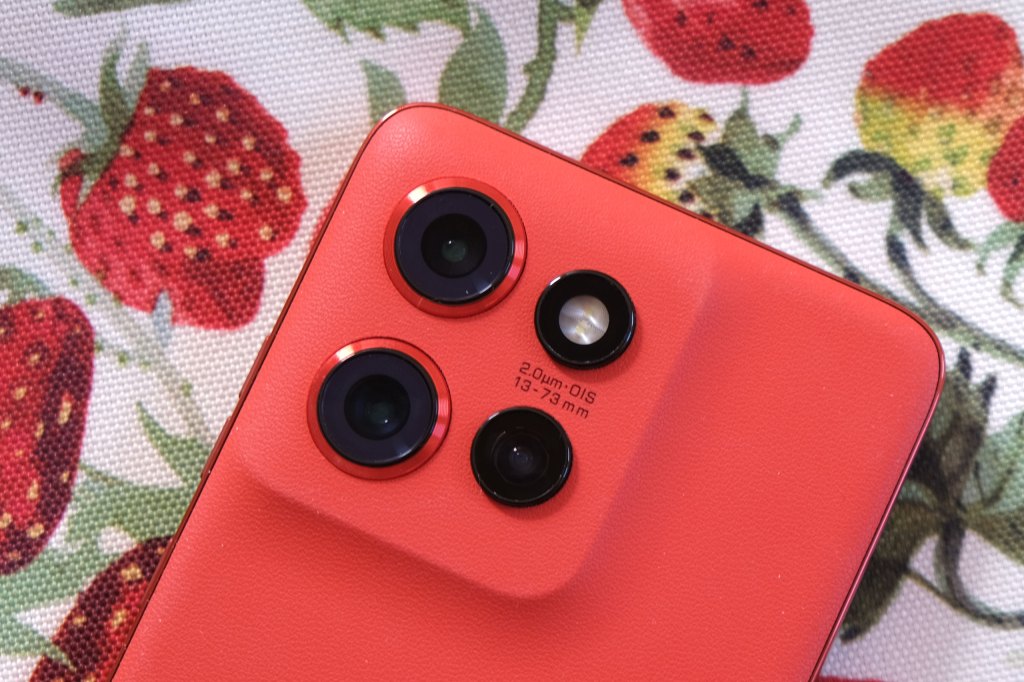
Amateur Photographer verdict
The Motorola Edge 50 Neo boasts a camera system that punches above its reasonable price tag. It does well in low light and the telephoto camera is rare at this price.- Good low light and portrait capabilities
- Great value for money
- Has a decent telephoto camera
- Photos sometimes come out with oversaturated colours
- Poor ultrawide camera
Specifications at a glance:
| Rear cameras | 50MP f/1.8 wide camera with OIS, PDAF 13MP f/2.2 ultrawide camera, PDAF 10MP f/2.0 3x telephoto camera, AF and OIS |
| Selfie camera | 32MP f/2.4 selfie camera |
| Video | 4K video recording |
| Screen | 6.4-inch screen, 120Hz with 3000nit peak brightness |
| Battery | 4310mAh battery |
| Dimensions | 154.1×71.2×8.1mm, 171g, IP68 water/dustproof rating |
The Motorola Edge 50 Neo’s camera system has a 50MP main camera with OIS and f/1.8 aperture, a 13MP ultra-wide camera with f/2.2 aperture, and a 32MP selfie camera on the front with an f/2.4 aperture. However, the 50 Neo gains a 10MP telephoto camera with OIS, a f/2.0 aperture, 3x optical zoom and 30x superzoom.
The phone is a capable performer in low light, and the phone is an impressive option when shooting portraits, with 24mm, 35mm, 50mm and 85mm options available. The ultra-wide camera, a 13MP unit, isn’t as good, producing images that lack detail.
The 32MP selfie camera does a good enough job, although it doesn’t feature autofocus, and the phone also produces decent-looking 4K video. The phone has an IP68 water and dust proof rating, rare for a budget phone.
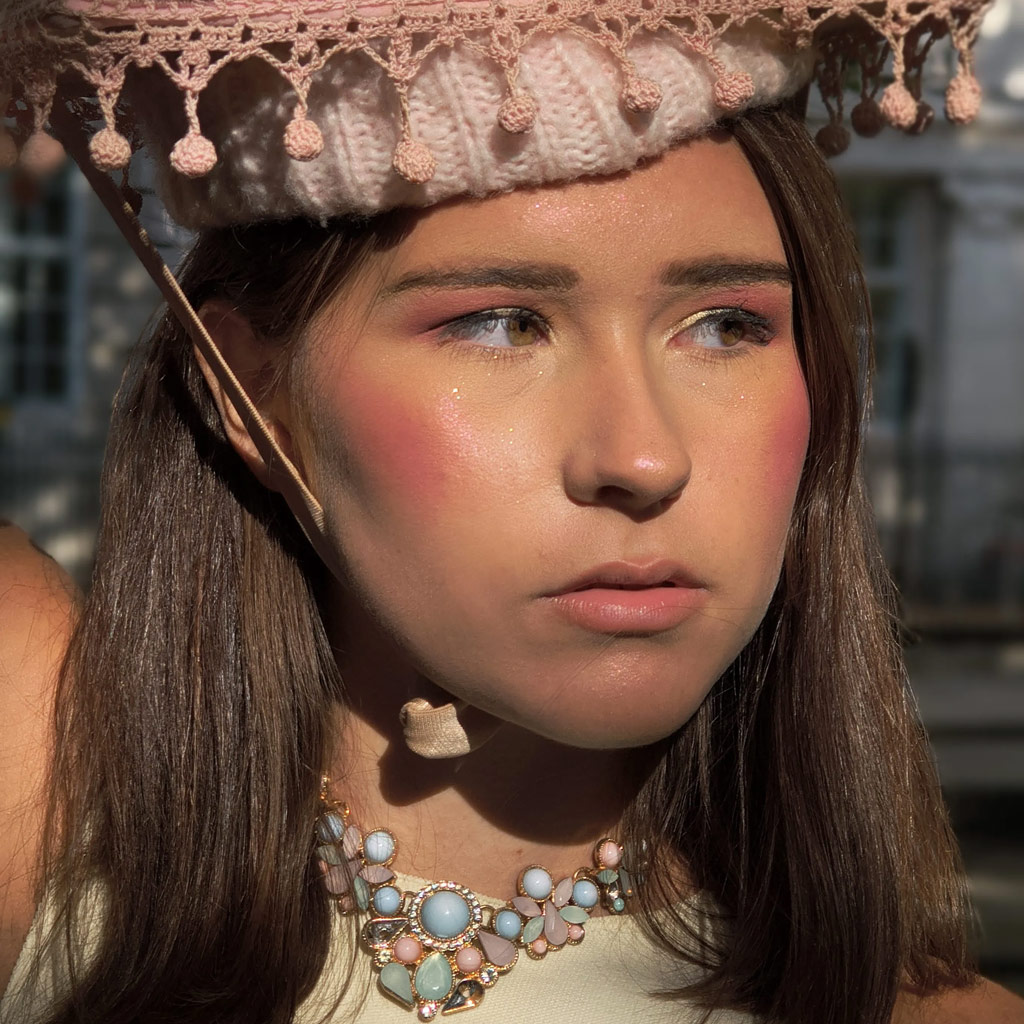
The Motorola Edge 50 Neo offers a capable imaging package for a very tempting price, in a range of stylish colours. Having taken it for a test drive, we can definitely recommend the phone for budget-conscious smartphone shooters. If you like the look of the recently announced flagship Motorola Edge 50 Ultra but find it to be a little out of your budget, this is definitely a solid alternative.
Read our full Motorola Edge 50 Neo review.
Cheapest Samsung phone
Best cheap Samsung phone: Samsung Galaxy A35
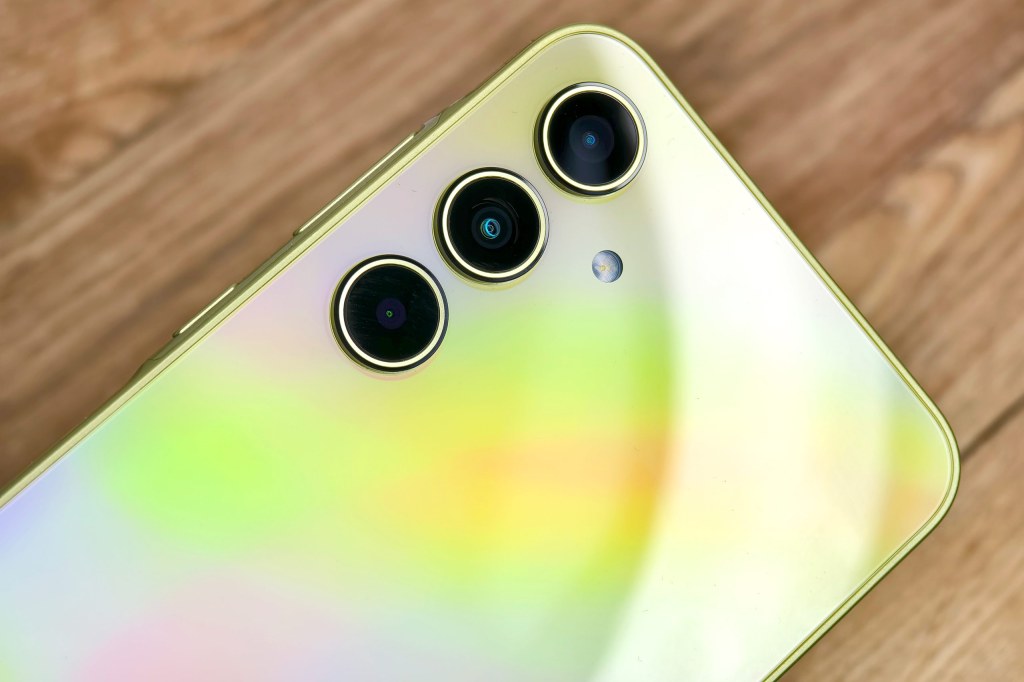
Amateur Photographer verdict
It’s not a great one for distant subjects, with poor zooming options, but otherwise the Samsung Galaxy A35 is a well-featured budget camera phone.- Main and ultra-wide camera work well
- Decent selfie camera
- Nice large screen
- No telephoto camera
- Poor digital zoom
Specifications at a glance:
| Rear cameras | 50MP wide-angle, f/1.8, 25mm equivalent, PDAF, OIS 8MP ultra-wide, f/2.2, 16mm equivalent, fixed focus 5MP macro camera, f/2.4, fixed focus |
| Selfie camera | 13MP selfie camera, f/2.2, fixed focus |
| Video | 4K from all cameras (excluding macro) |
| Screen | 6.6inch FullHD AMOLED, 120Hz screen, 1000nits peak brightness |
| Battery | 5000mAh battery |
| Dimensions | 161.7 x 78.0 x 8.2mm, 209g |
One of Samsung’s most affordable phones, the Galaxy A35 can also be found on offer quite frequently, with prices slashed down to around the $300 / £300 mark. That’s a seriously cheap price for a smartphone with a triple-camera setup, and particularly one that bears the Samsung name. It’s got a 50MP f/1.8 wide-angle main camera, an 8MP ultra-wide camera, a fixed-focus 5MP macro camera, and of course, a front-facing selfie camera, which offers 13MP of resolution and an f/2.2 aperture.
For the most part, these modules deliver credible results. In our review, we found that the Galaxy A35 was capable of producing punchy images with great colours and detail, just as we’ve come to expect from Samsung. It does best in sunny conditions, and unsurprisingly, you’ll get the best results from the 50MP main camera, which bins pixels to produce 12MP images.
The ultra-wide camera performs well too, producing images which are almost on par with those of the main camera. The 5MP macro camera is fairly run-of-the-mill – we generally prefer the telephoto modules that commonly appear in newer phones nowadays, though the cuts had to come somewhere. The Galaxy A35 isn’t particularly strong in low light, even with the dedicated Night Mode, so if this is a priority for you, it might be worth looking elsewhere.

The Samsung Galaxy A35 isn’t a showy phone, and it’s unlikely to wow you. But with a solid camera setup, a generally sized screen, an intuitive camera app and generous battery life, it ticks all the boxes you’re likely to want from a budget phone, and it’s hard to ask for more than that.
Read our full Samsung Galaxy A35 review.
Best mid-range Honor phone
Best mid-range Honor phone: Honor 90

Amateur Photographer verdict
The Honor 90 is ideal if you’re looking for something that can handle a variety of different shooting situations reasonably well, but don’t need all the extra advanced features that others bring.- Main camera consistently impresses
- Lovely high-quality display
- Battery lasts well
- No telephoto module
- Macro mode isn’t the best
Specifications at a glance:
| Rear cameras | 200MP wide camera, f/1.9 aperture, PDAF 12MP ultra wide and macro camera, f/2.2 aperture, AF 2MP depth camera, f/2.4 aperture |
| Selfie camera | 50MP f/2.4 selfie camera (fixed focus) |
| Video | 4K 30p |
| Screen | 6.7-inch AMOLED Quad-curved display, 120Hz |
| Battery | 5000mAh battery |
| Dimensions | 161.9 x 74.1 x 7.8mm, 183g |
Even though this is a reasonably mid-priced phone, the Honor 90 still manages to pack in a 200MP main camera, with a 1/1.4 inch sensor that’s upgraded in size compared to the previous version. Elsewhere on the phone, you’ve got an ultra-wide 12MP module with a 16mm equivalent lens, and a 2MP ‘depth’ camera that’s intended for creating images with a shallow depth of field (a.k.a. Portrait Mode). All this adds up to a pretty impressive package for a smartphone at this price – which varies depending on whether you want 256GB or 512GB of storage.
In our full review, we found the Honor 90 to be a pleasant and capable camera phone that was able to cope with a wide variety of shooting situations. It can’t shoot 8K video and 4K tops out at 30fps, but it’s only a small percentage of users who are going to be bothered about that. Realistically, the bigger omission for most people is going to be the lack of a telephoto camera, reducing your options when shooting at a distance. Most of the specialist modes are decent enough, though we found the close-up Super Macro mode to be fairly lacklustre, resulting in an undesirable loss of image detail.

The display on the Honor 90 is gorgeous, and we came away pretty impressed by how long the battery was capable of holding up. It produces consistently attractive images too, especially when you stick with the main camera module. For this price, it’s an excellent phone all-around.
Read our full Honor 90 review
Best battery life
Best battery life budget camera phone: OnePlus Nord CE4 Lite
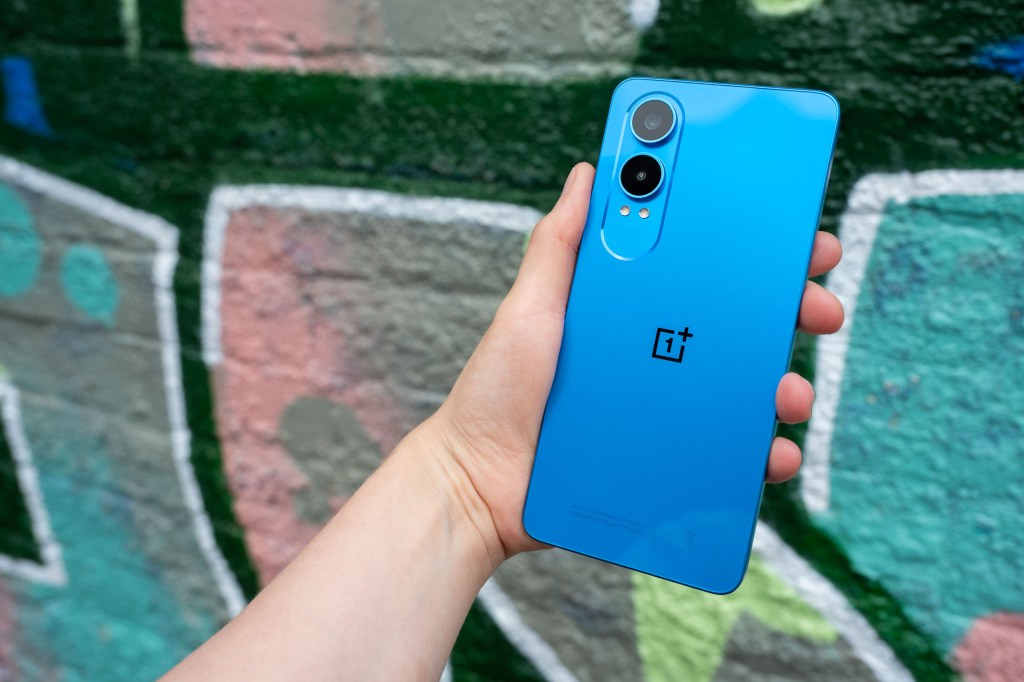
Amateur Photographer verdict
With its good array of specs, it’s certainly one of the best budget smartphones out there at the moment, and comes recommended.- Cheap price
- Fun colours
- Long battery
- Expandable storage
- Great screen
- Only one lens
- Zoom digital, so not great
- Competitors offer more
Specifications at a glance:
| Rear cameras | 50MP 1/1.95” Sony LYT-600 sensor, 25mm f/1.8 equivalent lens 2MP Depth-assist camera f/2.4 |
| Selfie camera | 16MP f/2.4, fixed focus |
| Video | FullHD 30p |
| Screen | 6.67” 2400 x 1080 AMOLED, 120Hz, 2100 nits peak brightness |
| Battery | 5110mAh / 5500mAh battery (depending on region) |
| Dimensions | 162.9 x 75.6 x 8.1mm, 191g |
With a whopping 5110mAh (5500mAh for US customers if you can find it) battery the OnePlus Nord CE4 Lite sports the longest battery life on our list. As a matter of fact it would rival some of the best flagship camera phones in this aspect. However there’s a catch, it only has one camera backed by a 50MP sensor. But don’t let this put you off, it is a simple set up ,but that’s not always a bad thing.
If you are a casual shooter and want a hassle-free camera the OnePlus Nord CE4 Lite might just be the one for you. In good light it produces images with nicely saturated colours and good level of detail. There’s a portrait mode on the main camera as well as on the selfie-camera, with a shallow depth of field effect. There is a 2x sensor crop option for zooming and a 10x digital zoom, however the latter is best avoided. Even though it lacks a dedicated macro mode, you can get reasonably close and fill the frame with some subjects.
The Full HD video created by it has decent colours, detail and is reasonably stable too. At 6.7”, the CE4 Lite is on the larger side, but surprisingly despite the low cost, the OLED display is actually pretty good – especially when it comes to brightness. It is rated as IP54, which should see it resist dust fairly well, as well as splashes and so on.
Read our full OnePlus Nord CE4 Lite review
Best under $500
Best under $500 / £450: Google Pixel 8a
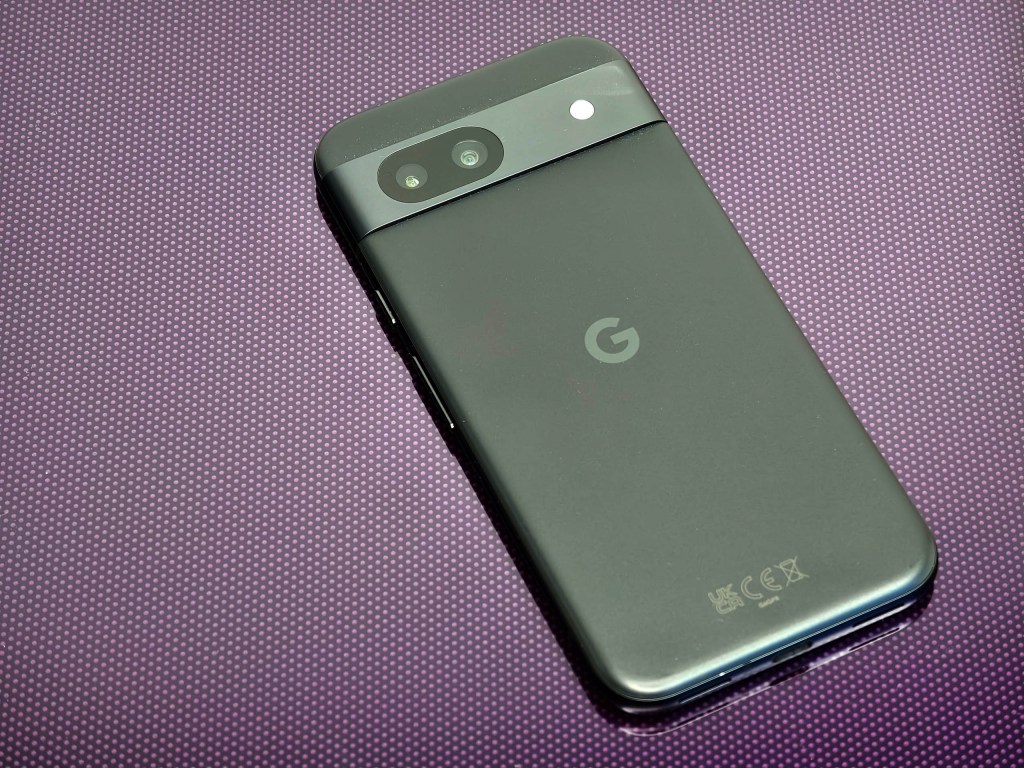
Amateur Photographer verdict
A top-tier phone at a budget price, the Pixel 8a sat as our previous top pick, with a clutch of useful features and excellent camera quality. There are plenty of cheaper rivals, though.- Powerful AI photo tools
- Excellent display quality
- Long battery life
- Pixel 7a is cheaper
- Rivals have larger screens
Specifications at a glance:
| Rear cameras | 64MP wide-angle, f/1.9, 25mm equivalent, (83°), OIS, 4K 60p 13MP ultra-wide, f/2.2, 14mm equivalent, (120°) |
| Selfie camera | 13MP selfie camera, f/2.2, 21mm equivalent, fixed focus |
| Video | 4K 30p from all cameras, 4K 60p from main |
| Screen | 6.1inch FullHD OLED, 60-120Hz screen, 2000nits peak brightness |
| Battery | 4492mAh battery |
| Dimensions | 152.1 x 72.7 x 8.9mm, 189g |
Google has long been in the habit of bringing out budget versions of its flagship phones, and the Pixel 8a is the latest in the line-up. A slimmed-down version of the Pixel 8, this phone packs a dual-camera setup that’s largely unchanged from the previous Pixel 7a. The upgrades and differences are largely internal, as the Pixel 8a inherits the latest AI tech. Users of the Pixel 8a now have Best Take, Magic Editor, and Audio Magic Eraser to play with, in addition to the more conventional photographic modes that have appeared on previous generations, such as Night Sight and long exposure.
The cameras are a 64MP wide-angle f/1.9 main camera, which produces 16MP images via pixel binning, and a 13MP f/2.2 ultra-wide camera with fixed focus. Fairly standard stuff, but as we found in our review, it results in images of high quality, with a pleasing level of detail and punchy but natural colours. The various shooting modes on the camera app work well, and if you have access to a decent smartphone support like a mini-tripod, you can take advantage of specialised modes like the astrophotography function.
Having taken hundreds of photos with both camera modules, we can say that results are much more consistent from the main camera. The ultra-wide module does produce noticeably more noise, especially evident when you inspect your images up close. However, we like the fact that you can switch on raw shooting, and 4K video produces good results.
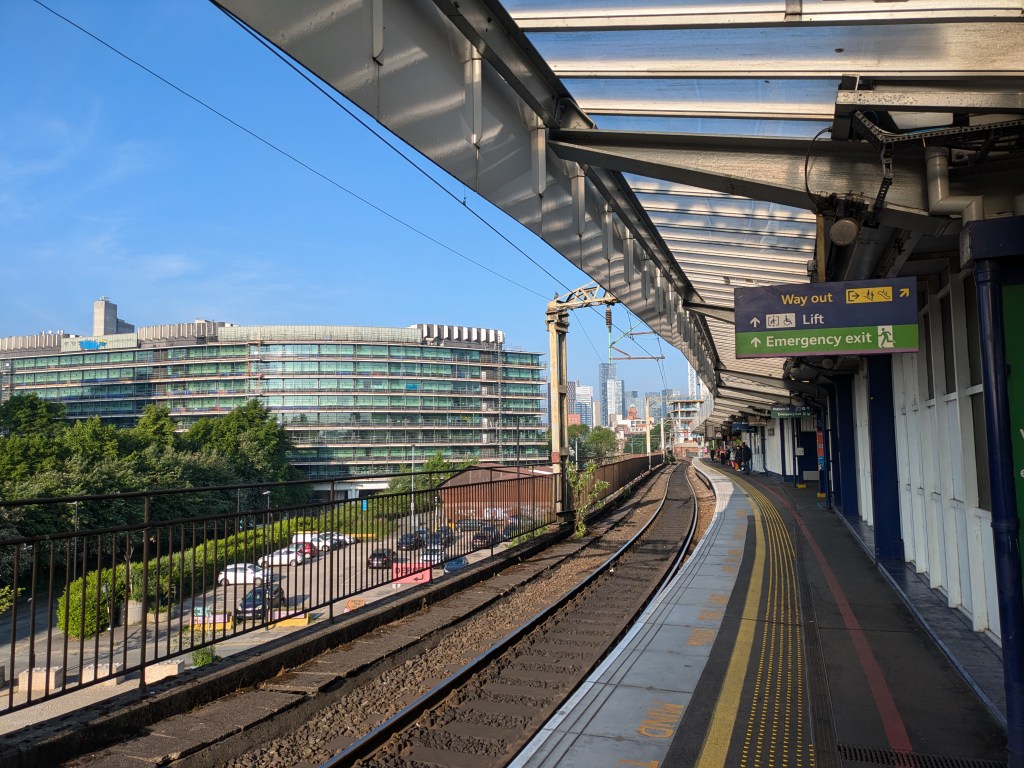
Honestly, the main rival to the Google Pixel 8a is likely to be another Google phone – if you don’t care about the AI features then the Pixel 7a is going to deliver much the same hardware for a cheaper price. However, with its price still temptingly low, we can safely say that the Google Pixel 8a is a great option and you will not be disappointed with the results it produces.
Read our full Google Pixel 8a review.
Best value Tecno phone
Best value Tecno phone: Tecno Camon 40 Pro

Amateur Photographer verdict
If the Camon 40 Pro is available near you, this phone offers a lot for the price, with a stylish design- Great price
- 50MP main camera with OIS
- 50MP selfie camera with AF
- Not available in all markets (not available in US/UK)
- Ultrawide lens only 8MP
Specifications at a glance:
| Rear cameras | 50MP f/1.9, 23mm (1x) equivalent camera, 1/1.56” sensor, PDAF, OIS 8MP f/2.2, 14mm (ultrawide) equivalent camera |
| Selfie camera | 50MP f/2.5, 24mm equivalent selfie camera, PDAF |
| Video | 4K video at 60fps |
| Screen | 6.78inch screen |
| Battery | 5200mAh battery with fast charging |
The Tecno Camon series of phones is Tecno’s range of smartphones designed for photography. The Tecno Camon 40 Pro is the second-to-top model (the Camon 40 Premier sits above it with an added telephoto camera), and offers a dual camera setup on the rear, and a 50MP selfie camera with auto-focus. However, it’s only available in certain markets, so if you find yourself in that market, count yourself one of the lucky ones.

Whilst not as fully stacked as the 40 Premier, there’s still a good 50MP main camera with optical image stabilisation (OIS), an 8MP ultra-wide angle camera, and on the front you’ll find a 50MP f/2.4 selfie camera with auto-focus! The phone can also record 4K video at 60fps, has a generous 5200mAh battery, with fast charging, but unfortunately wireless charging isn’t included.
Read our full Tecno Camon 40 Pro review
Frequently asked questions (FAQ)
What should you look for in a cheap camera phone?
We’ll concentrate on the photography features, and these centre around the phone’s camera array. These days, even budget camera phones come with more than one camera, each with its own sensor.
Typically, the main camera will have the best sensor and widest-aperture lens, but you can also expect to get an ultra-wide camera too. These typically have a lower resolution, however, and don’t usually match the main camera for quality, though they will be fine for most users. You may also get a ‘macro’ camera for ultra-close-ups, though in this price range, they sometimes have very low resolution and are not necessarily worth having. If you’re keen on close-ups, take a look at our Top Macro Photography Tips.
What you tend not to get even in the best budget and mid-range camera phones is a telephoto camera, except for one some models. Without the telephoto camera, you have to rely on a digital zoom, which will be effective but won’t provide the same quality.
It’s also worth checking out the front ‘selfie’ camera. The specs vary, and if you film or photograph yourself a lot, a front camera with a good sensor and autofocus (not all have autofocus) is definitely worth having.
Otherwise, look out for the general features like the size of the screen, whether the phone uses toughened ‘Gorilla Glass’ or plastic, and how much memory and/or storage comes with the phone. Plus pay attention to how many years of updates you’ll get, the longer you can use your phone securly, the better the value for money.
Lastly, camera phones will often come with an IP rating that tells you how resistant it is to dust and moisture. IP64, for example, means the phone is resistant to splashes, while IP68 means the phone can withstand full immersion in water for a limited time.
If you can’t decide between Android and iPhones, we have a handy breakdown of Android vs iOS: which is better for photography if you’re weighing up the two systems.
How many megapixels is good for a phone camera?
Don’t be too swayed by the camera resolution. The best budget camera phones may have ‘resolutions’ of 50MP, 108MP or 200MP, but this doesn’t mean the same as it would in a regular camera. These resolutions are ‘pixel-binned’ down to around 12 megapixels for actual shooting, and while there are modes that use the full resolution, the quality can be quite disappointing.
Looking specifically to shoot video? Then check out our guide to the best smartphones for video.
How we test budget smartphones
We have tested and reviewed every single phone in this guide, thoroughly, using them extensively for at least 2 weeks, and often longer, so you can trust our recommendations when deciding which budget phone to buy.
We review budget smartphones from the perspective of choosing a smartphone for its photography and camera performance, so we test every phone by looking at what it offers in terms of the cameras and included features for photography and video, and how it performs in real world use in a variety of different shooting situations.
We test each camera on the phone, whether that’s the ultra-wide angle, the main camera, and telephoto camera(s) if available, as well as the digital hybrid zoom options. Often on budget phones, the selfie camera can perform poorly, so we pay particular attention to testing the selfie camera.
We use the phone for photography in a range of lighting conditions, including low-light, where camera phones can struggle, particularly budget models where the camera sensor is often smaller than more premium models.
We test in in harsh lighting, where lens-flare can be an issue, and also look at how the camera copes with scenes with high dynamic range (HDR) as this stresses the sensor as well as the image processing.
We also look at specialist shooting modes on offer, whether that’s the portrait modes (looking at skin tones, background blur, and subject outlines, particularly around hair lines) or AI features for both shooting and editing.
Another aspect we pay close attention to is how good the overall phone is, in terms of battery life (and charging options), screen quality and brightness (testing outdoors in bright sunny conditions), plus overall build quality and value for money.
Recent updates
- October 2025: Samsung Galaxy S24 FE added as now under $500/£500, and offers great value and features. Oppo Reno 10 removed as difficult to buy from most retailers. How we test section thoroughly expanded to add clarity and additional information.
Article: Joshua Waller, with contributions from Rod Lawton, and Jon Stapley. *Prices correct at time of publication but may change without notice.
Further reading
- The best camera phones for photography
- The best used smartphones to buy
- The best smartphone apps for photography






